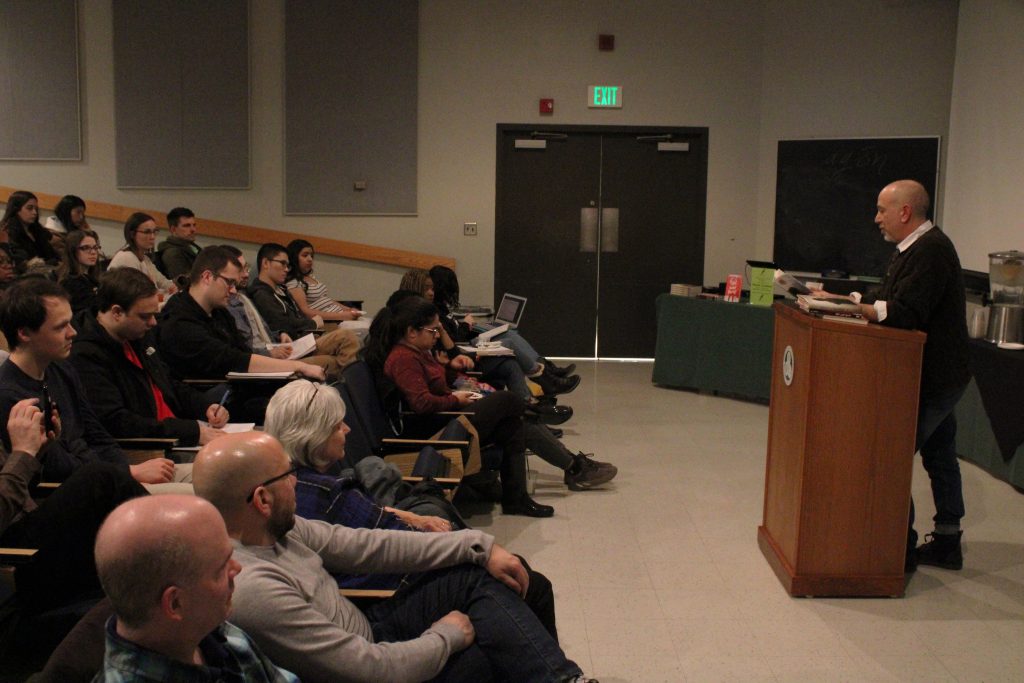With heavy young adult fiction at the forefront of his writing, Shawn Goodman is the latest writer to be installed into Binghamton University’s Readers’ Series. On Tuesday evening, Goodman read excerpts from his novels “Kindness for Weakness” and “Something Like Hope.”
Both novels center on troubled teenagers and how they navigate obstacles in their preteens. Goodman has worked in two different facilities for troubled teens and builds his characters based off of what he learned.
He recently became a school psychologist, and he sees events like the Readers’ Series as an opportunity to meet people he connects with.
“It’s one of the few chances I have to be around other people who are interested in writing, and I get to talk to and meet students,” Goodman said. “Other than that, I’m in a 9-to-5, middle-class family life.”
Goodman’s writing career took an unorthodox path; he started in naivety, as his work received praise from editors, but he didn’t understand yet how the whole process worked. His career catapulted when he won a writing contest that awarded him with a publishing contract, and from there he was able to get his pieces finalized and published.
Goodman said reading his work to an audience gives new light to the different aspects of his writing, as he picks up on different elements he would never have noticed without vocalizing the works.
“I notice rhythm, when it’s going well, when I wrote with a rhythm that works and then the flat spots where I didn’t do it so well,” Goodman said. “I’d go back and rewrite that if I could. I also notice in the beginning with ‘Something Like Hope,’ it was kind of slow. I realize that from reading it tonight, there was a lot of chapters of setup. It’s important I know why it’s there, but if I thought about it more, I probably would’ve skipped ahead with some more action-packed stuff.”
While doing the readings, Goodman seldom tries to do anything more than narrate, as he can’t impersonate his characters.
“I don’t [try to portray emotion or dialogue], I just try and get through it without screwing up,” Goodman said. “I never thought of myself as a great reader. I think it’s more challenging for me than the writing part but the more you do it, you get a little more comfortable with it. I don’t think I can — I mean this is a girl protagonist and 17-year-old boy protagonist, so I just try and read it as naturally as possible for a 50-year-old guy trying to read as a teenager.”
Claudian Francis, a sophomore majoring in economics, noticed character development more from Goodman’s narration than from her own reading of “Kindness for Weakness.”
“Character development [stood out to me more] — how in the beginning the main character was very much introverted and kind of lived in his head a little bit and toward the end he opened up his mind more,” Francis said. “He started to not only be more aware of himself but also what he’s capable of, which is really cool to see that — to see how he developed his character.”



